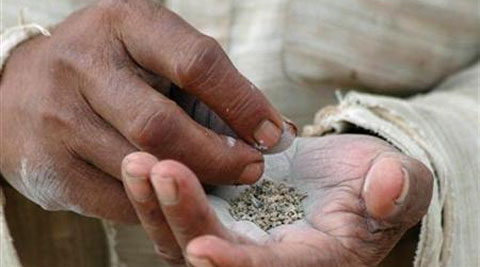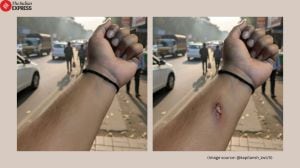Stay updated with the latest - Click here to follow us on Instagram
Do not roll back tax on tobacco products: NGO to Punjab govt
According to Global Adult Tobacco Survey (GATS) released in Oct 2010, nearly 24 lakh of the adult population (15 years and above) of Punjab consumes tobacco.
 According to Global Adult Tobacco Survey (GATS) released in Oct 2010, nearly 24 lakh of the adult population (15 years and above) of Punjab consumes tobacco. (Reuters)
According to Global Adult Tobacco Survey (GATS) released in Oct 2010, nearly 24 lakh of the adult population (15 years and above) of Punjab consumes tobacco. (Reuters)
Representatives of civil society have urged the Punjab government to increase Value Added Tax (VAT) on tobacco products in the state and thus, protect people from the harmful effects of tobacco.
Addressing a press conference on Tuesday, activists from NGO Voice Of Tobacco Victims said in this year’s budget, the government has proposed to roll back taxes on cigarettes from 55 percent to 22 percent. They said this move was anti-people and would be a setback for tobacco control measures in the state.
According to Global Adult Tobacco Survey (GATS) released in October 2010, nearly 24 lakh of the adult population (15 years and above) of Punjab consumes tobacco in some form or the other.
Project Director of the NGO, Ashima Sarin said, “Tobacco is extremely dangerous for health — this has been proven over two decades back by WHO. Over 9 lakh people of Punjab will die (premature deaths) due to serious illnesses such as cancer and heart diseases caused by this deadly product.”
She added, “The government must increase taxes in this year’s budget to 100 percent and the increase should be on all tobacco products. Rolling back taxes is encouraging people to consume tobacco. Illicit trade needs to be handled with stricter enforcement and not by reducing taxes on tobacco products.”
Advocate Amteshwer Kaur, who heads Generation Saviour Association in Mohali, said “The Punjab government must not even think of rolling back taxes. These products should not be seen in the market. Everyday 5,500 children in India are initiating tobacco use, which is very alarming.”
Dr Jatin Sarin, senior consultant from IVY Super-speciality Hospital said, “I see so many patients coming to my OPD and the numbers are just increasing. Tobacco is the only preventable cause of death. It has globally been proved that tax increase leads to decrease in consumption. The government must take measures to decrease consumption of tobacco and save lives.”
According to GATS India, the estimated number of tobacco users in India is 274.9 million of which 25.9 percent are users of smokeless tobacco while 5.7 percent are cigarette smokers and 9.2 percent smoke beedis.







